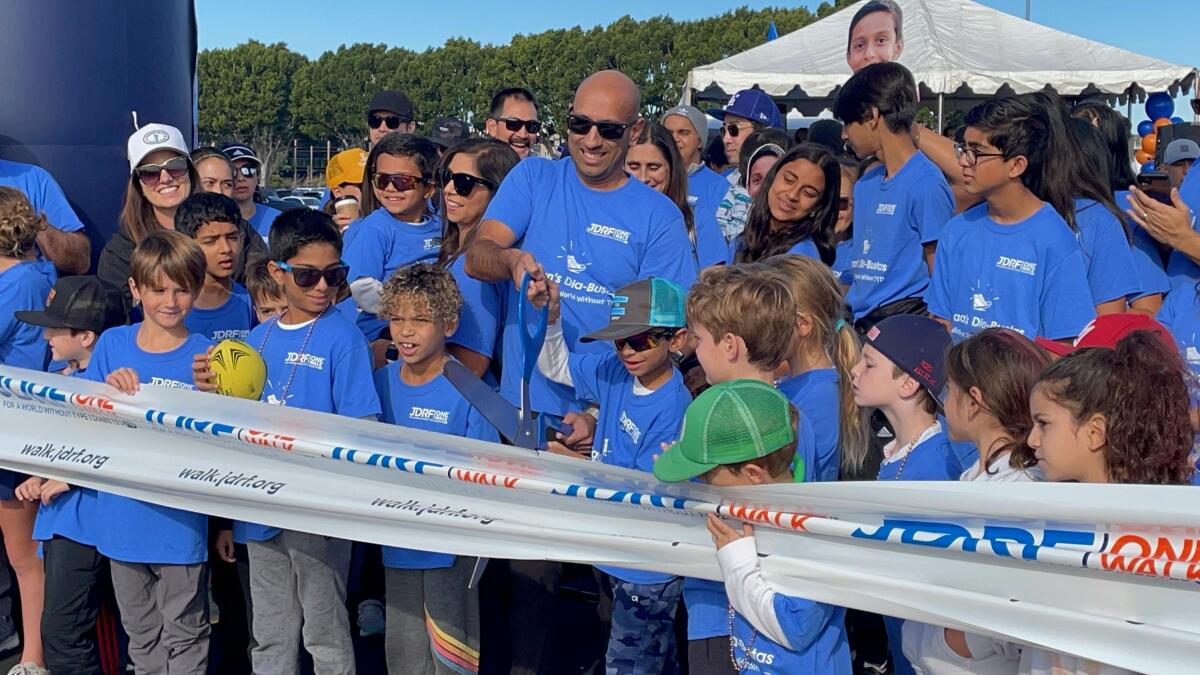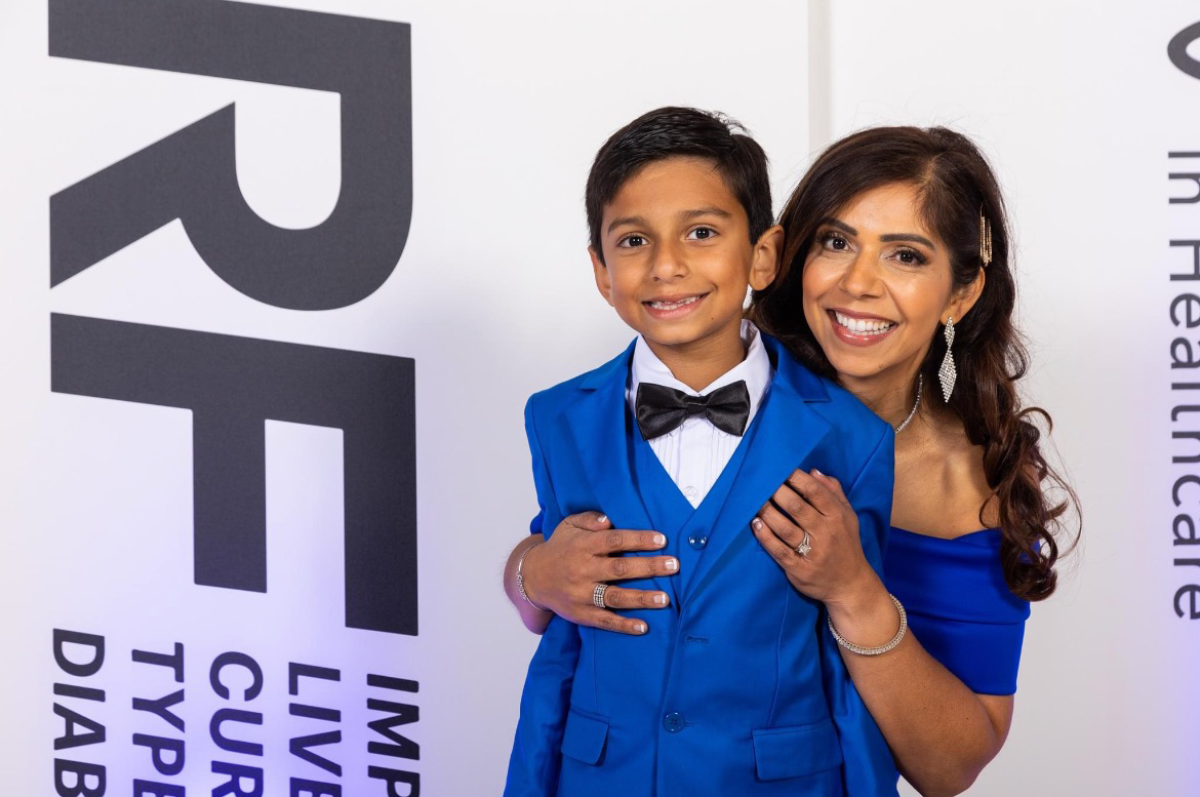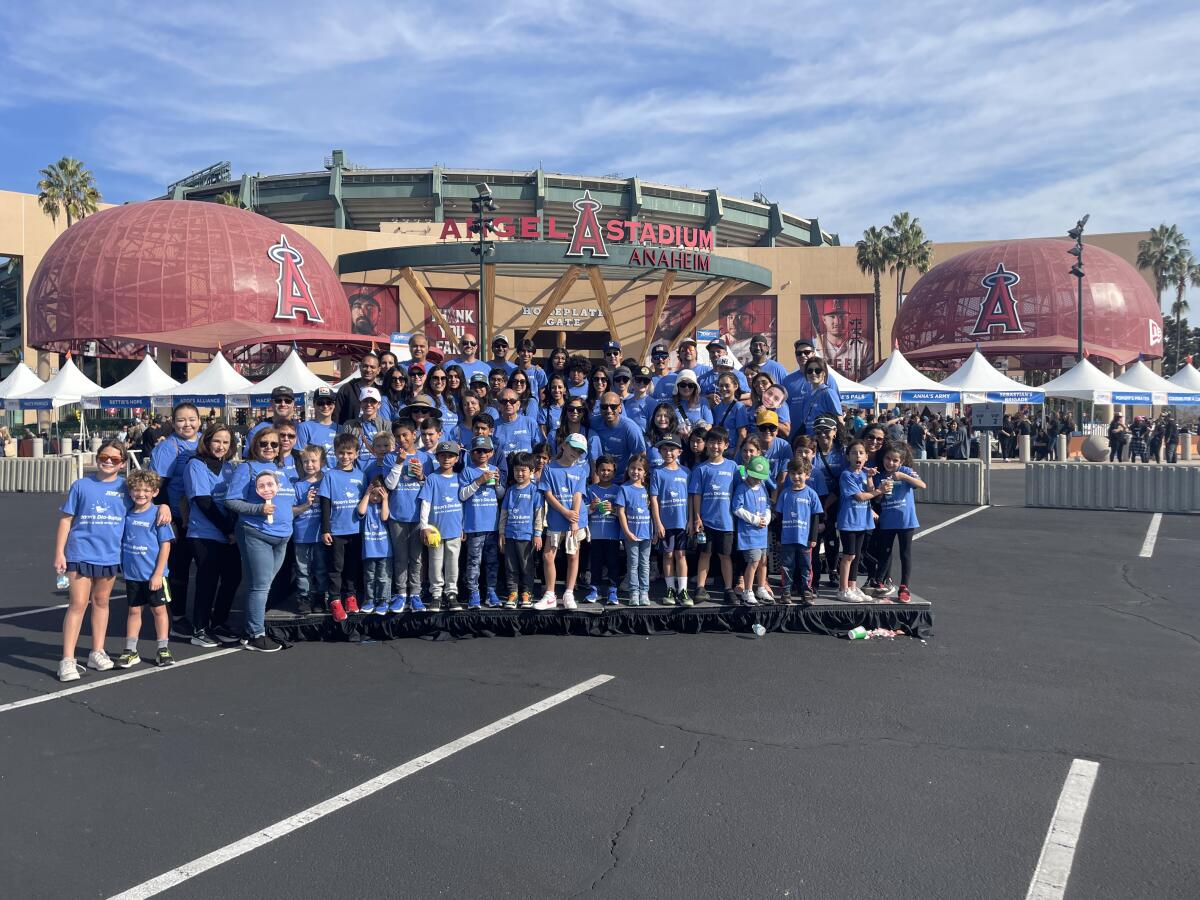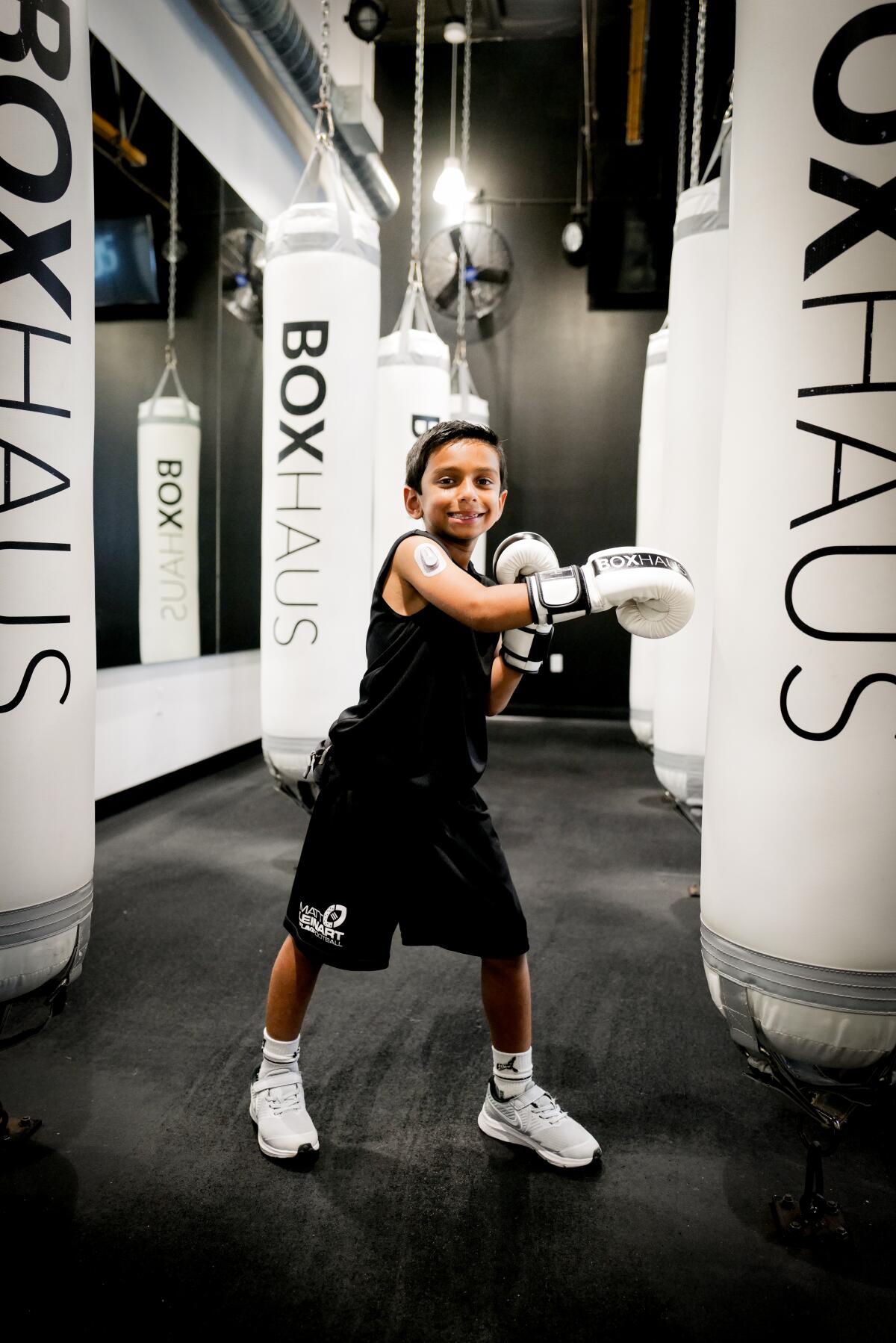Families touched by juvenile diabetes will put their best feet forward in Angels Stadium walk

- Share via
When her son Riaan was diagnosed with Type-1 diabetes, Rupali Pai said she didn’t know very much about the autoimmune disease.
“Like most people, I knew a bit about Type-2 [diabetes], Pai said. “It was something people got older in life from a bad diet, lack of exercise, but Type-1? When the symptoms came on, he was really, really thirsty. He was drinking so much water. I have a Stanley cup and I drink a ton, but he was drinking more than me and asking to buy one of those 50-ounce cups, but he was only 6½.”
“One day, he was like: ‘I refilled it twice at school today,’ and I said, ‘What? That’s insane. You should not be drinking that much water,’” she continued.
That’s when she took her son to visit his pediatrician, who did a blood sugar and urine test. After discovering ketones (a chemical the body produces to break down fat) in his urine, Riaan was rushed to the Children’s Hospital of Orange County and diagnosed as a Type-1 diabetic.

Doctors informed her that most children admitted to the hospital for diabetes are there because of diabetic ketoacidosis, known as DKA, as symptoms for Type-1 diabetes are not always immediately obvious.
“It happened to be that February that it was really hot. So, people chalked up the symptoms to being thirsty, and people tend to lose weight but are eating a ton of food, which kids do. A lot of the symptoms are things you don’t really think about. It’s my mother’s intuition, I guess,” she said. “But Riaan was hospitalized for two days, and in those two days we had constant people coming in with nutritionists, [certified diabetes educators]. They taught us how to give insulin through a shot, check blood pressure, and off you go.”
For the first few weeks, Pai said she slept next to her son and checked his blood sugar levels just to make sure they were in the correct range. She said the new reality of living with her son’s chronic condition changed her family’s life, though Riaan, now 8, isn’t particularly bothered by it.
Now in second grade, the Harbor Day School student said he goes about his school day with little interruption, though sometimes he will have to go to the nurse’s office to get checked. At night, his mom will check in when he’s been asleep and give him sugar if the his blood sugar levels are too low. Outside of that, he doesn’t think much about it, much to the relief of his parents, who are grateful for his optimism.

After the diagnosis Pai threw herself into the work of understanding her child’s condition and began fundraising for the Juvenile Diabetes Research Foundation, a nonprofit that provides community services to those affected by Type-1 diabetes and funds research for prevention and a cure.
One thing led to another, and Pai is now a board member of the local Southern California chapter of the Juvenile Diabetes Research Foundation. She and her family, under the banner of Riaan’s Dia-Busters team, raised $40,000 from the local community for the JDRF One Walk in 2022. So far this year, they’ve raised $16,835 for the upcoming walk, which will be at Angels Stadium in Anaheim on Dec. 3, but are hopeful to hit their $50,000 goal.
Michelle Popoff, executive director of Southern California chapter for JDRF, said she’s aiming even higher for the total event — $550,000.
The Centers for Disease Control reports that, according to rough estimates made in 2021, 352,000 U.S. children and adolescents younger than 20 had been diagnosed with diabetes, of them 304,000 with Type-1.
Popoff said the JDRF One Walk has been taking place for at least 30 years. The majority of the funds raised go toward research while a small amount is retained for program and service costs. Prior to the pandemic, Popoff said attendance was somewhere in the 5,000s.

Last year’s return of the event drew about 2,500 to 3,000 people and raised about $516,000.
“I think the fundraising side [of having the walk] is obvious. Research is expensive. The more money we can put into research ... the better, but really — and I can speak from personal experience and from all the families we know —Walk Day is my favorite day of the year,” Popoff said.
“Our T1D community — it’s a feeling. Especially when you’re a newly diagnosed family, you come up and it’s like you’re not alone,” she continued. “You look around and know everyone person there is touched by Type-1 diabetes in some way. It’s all about being there with the community and not being alone.”
Gates for the Dec. 3 walk at Angels Stadium open at 8 a.m. The main event will not begin until 10 a.m., but at 9:40 the first parade of Type-1 diagnosed patients will take place, organized by the number of years they’ve been living with the disease.
For more information, visit 2jdf.org.
All the latest on Orange County from Orange County.
Get our free TimesOC newsletter.
You may occasionally receive promotional content from the Daily Pilot.




